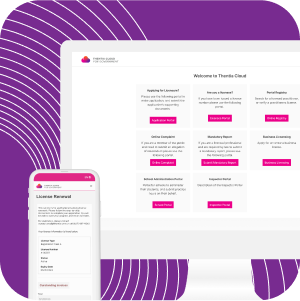At the start of the pandemic, many of us clung to the normal. We carried on, hoping that if we just kept doing things the same way, danger would pass us by. It didn’t. And suddenly there was much talk of “the new normal” and of how the current changes would become a permanent part of how we live and work. In many countries, as we emerge from the worst effects of COVID-19 (I claim no prescience about further outbreaks), it seems time to ask if there really is a new normal or if, as soon as it is possible, we will revert gratefully to the old normal?
Certainly, much has changed in the way we have lived and worked in the last 16 months: The pandemic has been an accelerator for the move to a digital economy; we have abandoned our offices and the daily commute to work; we have navigated virtual meetings and the strengths and weaknesses of Zoom or Teams or GoTo or Webex; and we have struggled with bandwidth, suffered eyestrain, and missed the easy, informal communication of daily contact with our colleagues. While the streets have been emptier of people traveling to work, they have been busy with vans delivering all of our material and personal needs. Work culture has changed, hours are more flexible, dress-down Friday is dress-down everyday, and it is perfectly acceptable to be interrupted at a meeting by your children or your dog, or to leave a meeting to accept a package at your door.
Do we enjoy all these changes? Have they been good or bad for our work-life balance? Much will depend on individual circumstances, but it seems probable that our relationship with work will become more flexible, that businesses will reduce the requirement to be present in the office, and that the investments needed for accompanying digital enablers will increase. The balance between the material and the virtual has probably changed forever.
Challenges abound for professional regulators
Professional regulators, like other organizations, have adapted to these generic changes in work, but they have faced additional challenges, too. They have had to manage their regulatory business remotely and also adapt standards and guidance for the professions they regulate. The importance of the latter has been particularly acute in the regulation of clinical and caring professions, health and safety, and research. The issues raised have been both practical and ethical, with the health, safety, right, and interests of frontline workers in direct competition with those of clients.
The adaptations that regulators have made have been summarized by the Professional Standards Authority (PSA) in the UK. In a recent review, the organization reports improvements in relationships between regulators, collaboration to assure safe care, the creation of shared COVID-19 standards and guidance, rapid adoption of digital technologies to keep regulation going, as well as many consequent benefits, such as greater cost effectiveness and the rapid implementation of other innovations. However, the limitations of the outdated technologies used by many regulators made adaptation to online working slow and difficult for some.
Innovation by regulators has also been uneven. In Ontario, Canada, more than half of the health colleges have cancelled practical examinations, but only a few are actively seeking alternatives, according to the Province’s Fairness Commissioner.
Less positively, the PSA observed reduced engagement with service users and the public and a disregard for public concerns about safety and quality of care and suggested this may result in loss of trust in regulators in the longer term. It also suggested that the blurring of boundaries between independent regulators and professional or state institutions was creating conflicts of interest.
The early responses of some unions and trade associations might have seen this as posing greater health risks to professionals, arguing that services be shut down by regulators so that insurance claims could be made. The majority fortunately sought agreement on infection control guidance and safe ways of working, but we know that many of the services used in the old normal have diminished or been unavailable while the pandemic consumed resources and attention.
Public health front and center in private lives
Ethical issues for regulators have extended to the personal lives of professionals. What if you are a health professional who is doubtful about vaccines? Are you allowed to express that view in public? Does it make a difference if you speak as a professional or as a private individual? Should vaccination be mandatory for certain occupations or activities? The intrusion of public health into private lives is not a new moral dilemma, but it has been given invigorated life by the daily prospect of death.
Which of these changes to work and to regulation will we preserve? Were we over-regulating in the past, or are we appropriately adapting to a new balance of risks in the present? A statement from the Australian Health Practitioner Regulatory Agency (AHPRA) sums up the dilemma: “We have made pragmatic decisions to boost the number of available practitioners…and to temporarily modify some of our regulatory requirements, while maintaining patient safety.” If patient safety can be maintained with modified requirements, then we must ask if the original requirements were necessary in the first place. Many professionals who have worked competently and safely under temporary arrangements will be wondering why earlier requirements should be re-imposed, and their regulators will be assessing the changed balance of risk and wondering the very same thing.
Pandemic impacts affect business, society unevenly
Two slogans have been much promoted during the pandemic by political and public health leaders: “We are all in it together” and “No one is safe until everyone is safe.” Both these statements are demonstrably untrue.
We have not been all in it together; the impact of the restrictions brought in by governments have affected different occupations and sectors of society very unevenly and have increased economic, social, and health inequalities. Black and ethnic minorities have been particularly disadvantaged. The pain and the cost of the pandemic have not been equally shared. Meanwhile, many of us are able to be safe despite the millions who are not.
While wanting everyone to be safe is an admirable moral objective, what that message really promotes is fear, not hope. As every competent regulator knows, absolute safety is impossible. We deal in probabilities, not certainties, and in the balance of risks of harm, including the many harms of economic, legal, social, and personal distress.
As we move forward and create a new normal for ourselves, wise regulators will take a broad view of their role and seek to balance new risks of harm with new benefits in the interests of their publics, their practitioners, and their staff.
Harry Cayton is a leading authority on regulatory practices and has advised multiple professional and regulatory boards. In addition to previously serving as chief executive of the United Kingdom’s Professional Standards Authority, he pioneered right-touch regulation, an approach to regulatory decision-making that has been adopted by regulatory bodies across the world.












